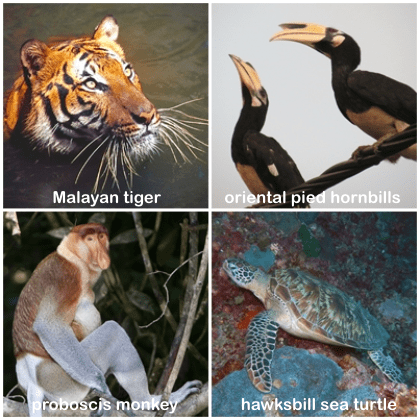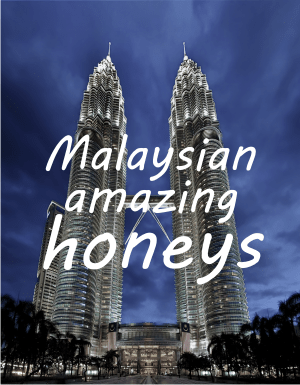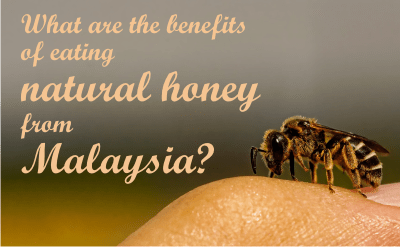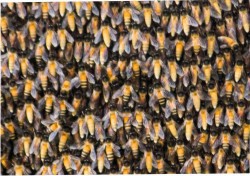Malaysia is a Southeast Asian country occupying parts of the Malay Peninsula and the island of Borneo. It’s a country known for its beaches, rainforests and the 451m-tall Petronas Twin Towers. It has Malay, Chinese, Indian and European cultural influences and the capital is Kuala Lumpur.
It has land borders with Thailand in West Malaysia, and Indonesia and Brunei in East Malaysia. It is linked to Singapore by a narrow causeway and a bridge. The country also has maritime boundaries with Vietnam and the Philippines.
 picture source operationworld.org
picture source operationworld.org
Malaysia is within the equatorial region, where a tropical rainforest climate is apparent all year round.
The local climate is equatorial and characterized by the annual monsoons: the southwest (from April to October) and the northeast (from October to February). The temperature is moderated by the presence of the surrounding oceans. Humidity is usually high, and the average annual rainfall is 250 cm (98 in).
For all these reasons, Malaysia is a remarkable country through its megadiversity. It has a high number of species and many of them are to be found only there (endemic). It contains 20% of the world’s animal species. Among them:
– about 210 mammal species in the country.
– over 620 species of birds (recorded in Peninsular Malaysia, with many endemic to the mountains there. A high number of endemic bird species are also found in Malaysian Borneo.)
– 250 reptile species have been recorded in the country, with about 150 species of snakes and 80 species of lizards.
– about 150 species of frogs and thousands of insect species
– around 600 coral species and 1200 fish species.
 picture credit via wikimedia commons
picture credit via wikimedia commons
From such an exotic country flora could not make an exception. Two thirds of Malaysia is covered in forest, with some believed to be 130 million years old. There are around 14,500 species of flowering plants and trees. Besides rainforests, there are over 1,425 km2 (550 sq mi) of mangroves in Malaysia, and a large amount of peat forest.
At higher altitudes, oaks, chestnuts, and rhododendrons replace dipterocarps. There are an estimated 8,500 species of vascular plants in Peninsular Malaysia, with another 15,000 in the East. The forests of East Malaysia are estimated to be the habitat of around 2,000 tree species, and are one of the most biodiverse areas in the world, with 240 different species of trees every hectare. (These forests host many members of the Rafflesia genus, the largest flowers in the world, with a maximum diameter of 1 m (3 ft 3 in)).
Just imagine the honey that can be made from such a diversity of flowers and trees. Besides, the diversity of bees also influences the quality of honey:
– Apis Mellifera aka the European honey bee
– Solitary Bee – Osmia rufa
– Carpenter Bees – Xylocopa virginica
– Bumble Bee – Bombus sp
– Apis Cerana aka Eastern honey bee or the Asiatic honey bee – amedium-sized bee of10-11mm, that generally build multiple comb nests inside cavities)
– Apis koschevnikovi – also known as Apis Cerana’s sister
– Apis andreniformis = aka the black dwarf honey bee
– Apis Dorsata – the giant honey bee that can reach 2 cm (0.8in) and builds huge nests in open spaces, mainly far off the ground, like on tree limbs, under cliff overhangs and sometimes on buildings. Chinese calls it “Ba Gong Mi” (八公蜜) mining horror. It is the most aggressive bee of all species. Taking their honey is called “honey hunting” and really is a dangerous job. Their larvae are edible and people say it tastes like milk (!!).
There are considered to be around 50 species of stingless bees (there are around 500 in the whole world). Among them the most common are:
– Heterotrigona itama
– Geniotrigona thoracica (also known as lebah kelulut) – with high commercial, environmental, educational and eco-tourism values.
Types of Malaysian honey
The most important ones (both popular and highly medicinal) are: Tualang honey, Gelam honey, Kelulut honey (from different places like Hitam or Putih), Pineapple honey (known as nenas madu), Durian honey (Durio zibethinus Murr.), and other forest honeys known as “Hutan honey” (meaning jungle honey) commercialized under specific brands such as Pucuk Daun honey and Ee Feng Gu honey, or some “tropical honey” produced in the deep rainforest of the region Borneo, especially from the tree Acacia Mangium, known as “Borneo honey”.
And there are also some common honeys such as acacia (yet, different than the well-known European acacia honey), longan, rubber tree or sourwood honeys.
Tualang honey (aka rainforest honey)
It’s wild polifloral honey produced by the giant bee Apis Dorsata, in huge combs hanging in open space, up on the branches of a very tall tree, Koompassia excelsa (Becc.). Harvesting this honey is known as honey hunting, and it does look like a robbery.
These huge and incredibly aggressive bees produce a lot of honey, at one honey hunting the harvest can be of 150kg.
Tualang honey has powerful antibacterial, antioxidant, anti-inflammatory, antidiabetic, antitumor and antiproliferative activities and, of course, wound healing properties. It helps in cardiovascular and respiratory conditions, but also genital and menopausal symptoms. it also has inhibitory effects in breast cancer. For all of these there have been done lots of studies and clinical trials, they are not simply traditional medicinal claims.
• Tualang honey. What is tualang honey?
• Tualang honey benefits for health
• Is tualang honey (aka rainforest honey) an alternative treatment for breast cancer?

Gelam / Melaleuca honey
It is known as gelam honey, maleleuca honey, cajeput honey or tea tree honey.
It is produced by Apis Dorsata from some species of trees in Melaleuca genus, Family Myrtaceae. Especially from the tree called Melaleuca cajuputi, also known as Melaleuca leucadendra or leucodendron.
The honey is heavy bodied and has a slight pungent taste. Recent studies have reported that it possesses a notably high calcium content and has a high level of antibacterial and antifungal properties. It has also been found to kill liver cancer cells, exhibiting selective cytotoxicity, anti-angiogenic, cytotoxic, and anti-proliferative properties.
• What is melaleuca honey? Or gelam honey? Why so many different names?
• Gelam honey makes the cancer cells commit suicide!
Pineapple honey
Also known as nenas madu in Malaysia, it is amber in color, mildly sweet and has a slight sour taste similar to the pineapple fruit. It is produced by Apis mellifera bees.
Pineapple honey was found to contain an exceptionally high level of iron content (Mohammed Moniruzzaman et. al., BioMed Research International Volume 2014)
Durian honey
The durian honey is not stinky!
This is the first and the most important thing to know when it comes to this honey.
For those living in Asia, this durian fruit is nothing new. But for me it was, in Europe we don’t have it, not even in supermarket. And after googling a little I understood why. It has the stinkiest, most horrible smell in the world.
The smell has been described as decaying onion-like, rotten eggs, sulfury, and like fried shallots, geneticist Bin Tean Teh of the Duke–National University of Singapore (NUS). “Even wrapped in six layers of shrink wrap, buried in foil and encased in cement, the odor would escape like an evil spirit,” he writes. “You’d have to treat it like fissionable material, keep it segregated in a special locker in some specially ventilated subcellar constructed just for that purpose.”
Anyway, in durian honey there isn’t a slightest hint of it. This honey is made by the giant Apis Dorsata bees, which pollinate the tree Durian kutejensis (along with birds and bats). They make an amber honey, a very pleasant and smooth one, with a faint bitter after-taste.
Borneo honey
It is a polifloral honey produced locally by Apis cerana, smaller sized local bees from the Sabah Rural Development Corporation Apiary in Kudat, East Malaysia.
The bees collect the nectar mainly from the Forest mangrove or Mangium tree (Acacia mangium) trees and flowers. It is also known as tropical honey. It’s light amber in color and has a very high ascorbic acid content (140.14 ± 2.18 mg/kg) – probably the highest in all Malaysian honeys. (Mohammed Moniruzzaman et al., 2013)
Acacia mangium honey, made from a real acacia tree
Kelulut honey
Also known as lebah kelulut honey (lebah means “bee”) or trigona honey, it is a polifloral honey produced by a stingless bee, Geniotrigona thoracica, a very small bee of 3 to 5 mm (compare it to Apis Dorsata of 20 mm!) which produces maximum 500 g of honey per year in so-called pots (not hexagonal cells), inside cavities.
This type of honey has a higher water content (25% compared to only 18% in floral honeys) and thus ferment easier. When it is not fresh it has a slightly sour taste, due to fermentation. Scientists say that this fermentation increases its antioxidant properties.
Also considered a medicinal honey, it is antimicrobial, antioxidant, anti-aging, anti-inflammatory properties and helps in cataract and other eye diseases.
• What is kelulut honey or trigona honey?
• Health benefits of Trigona honey (aka kelulut honey)
Beware of fake honey in Malaysia
Probably like everywhere else in the world. It was reported that on average only 20% of honey in the market is genuine, pure honey. The other 80% of the Malaysian honey in the market is either adulterated or synthetic. And some dishonest locals can also sell you fake honey. There were lots if cases reported of fake kelulut honey especially.
Here are some places where you can buy some, http://eefenggu.com/, http://www.yummihouse.com/, http://www.bee-generation.com/, simple-bee.com.my, http://www.beeshop.com.my/. Remember it is better to buy a pasteurized honey (of course raw honey is the best) than to buy artificial honey, or raw honey full of antibiotics, pesticides or god knows what.
*************
**************
References:
rentokil.com.my
star2.com
www.mysabah.com/forbes.com
ttps://en.wikipedia.org/wiki/Durian



